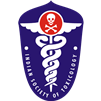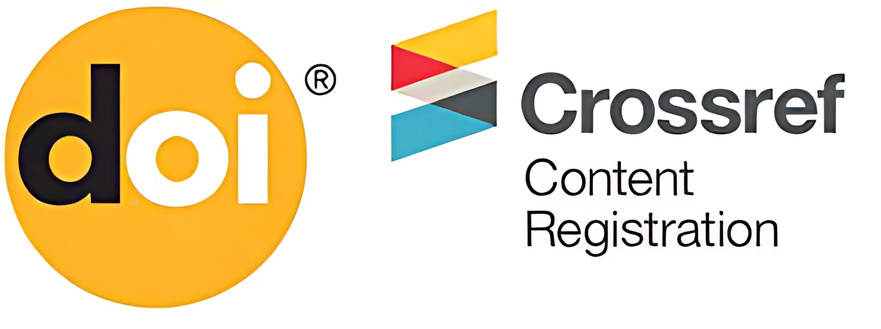Vol.18 Issue No.1 (2022): Journal of Indian Society of Toxicology
Gastric lavage: savior or superfluous?
Anand Mugadlimath, Mandar Sane
Removal of unabsorbed poison is one of the cornerstone strategies for poisoning case management since time immemorial, be it by inducing vomiting or other means. Gastric lavage, though popular means of treatment, primarily for the above purpose now remains of contentious efficacy the last two decades. Therefore, a panel of experts from the American Academy of Clinical Toxicology and the European Association of Poisons Centres and Clinical Toxicologists evaluated the literature regarding gastric lavage. The panel concluded that there was no conclusive evidence to support the continued use of gastric lavage for poisoned patients. Therefore, poison centres seldom recommend gastric lavage today and its use in emergency departments has declined steadily. [1, 2]
Earlier studies on the advent of gastric lavage discussed poisoning due to compounds in tablet form. Opium[3,4] and barbiturates[5] were the earlier compounds which showed the utility of gastric lavage in its over dosage. Most of the studies thereafter continued to be conducted on drugs having tablet formulation. However, evidence from such studies brought the benefits of gastric lavage into question.[6,7] Position paper and its regular updates also conclude that there is no conclusive evidence to support the continued use of gastric lavage for poisoned patients. Position paper was based on animal studies, volunteer experimental studies and clinical studies.[8–11]
Research and studies from the advent of gastric lavage to date revolve around poisoning related to drug formulations. It is so because poisoning trends in those regions had predominantly ingested drugs like minor tranquilisers, tricyclic antidepressants, paracetamol-containing analgesics, salicylates and other drug formulations.[6,7] However, poisoning trends in India showed liquid compounds as the most used formulations, with organophosphorus insecticides as the most common poisons.[12] Review of controlled clinical trials of gastric lavage in acute organophosphorus poisoning showed encouraging results in form of shorter hospital stay of patients, reduced dose of atropine, reduced time for atropinisation & reduced time for AChE recovery.[13] The review paper studied 23 randomised controlled trials (RCT) from China and reflected very high degree of belief in gastric lavage as an intervention amongst doctors and medical researchers in China.[13] The studies from China have methodological flaws and doubts are raised regarding accepting the results for global clinical practice. However, in absence of any RCT from India, results from Chinese studies can be extrapolated to clinical practice in India, as these studies were conducted on the most common poisonous compound i.e., Organophosphorus compound.
Standard Indian textbooks related to medical toxicology recommend gastric lavage in many of the poisons. As a result of this, administering gastric lavage has become a 'reasonable standard of care' in the treatment of poisoning cases. Similarly, it is routinely performed without weighing its risks-benefits for fulflling the medicolegal obligation. However, it must be prudently used, and administering gastric lavage should not be an automatic spinal reflex in the management of poisoning cases. It must be remembered; that the law does not mandate gastric lavage aspirate in poisoning cases. It remains the discretion of the treating doctor, and for obvious reasons law will not dwell on it. In the past, gastric fluid was recommended for toxicological analysis, but today toxicology laboratories prefer the analysis of blood and/or urine.[14]
Regarding the gastric emptying time, the literature says, digestible solids are emptied in the digestive period that lasts a maximum 2 to 3hours after a meal and clear fluid are emptied in less than an hour.[15, 16] Taking into consideration the time taken for victims to be brought for medical treatment in Indian scenario (most victims are from rural setup and most poisons are liquid in nature), it is unrealistic to expect them to be in the hospital in less than 1 hour. From the above discussion, we conclude that gastric lavage should not bedone as a customary practice or altogether abandoned in the management of poisoning cases.
The selection of patients becomes vital in such situations. It should not be left to the judgement of junior doctors or nurses. Instead, there should be a clear consensus among clinicians depending on the toxicology profile they are anticipating in practice. It will depend upon the nature of the poison consumed, the amount involved, the time interval since ingestion, and their pharmacological and toxicological effects must be considered. The position paper states that lavage should not be considered unless poisoning is potentially life-threatening or it presents within 60 mins of ingestion.[10] More evidence-based studies are required in the subcontinent considering its toxicology trends to provide the standard of care related to gastric decontamination procedures. Nevertheless, lavage should be avoided when potential harms outweigh benefits e.g., in cases having craniofacial abnormalities, concomitant head trauma, a patient with a depressed level of consciousness or unprotected airway, or a patient who has ingested a corrosive poison or hydrocarbon compound.
Takeaways
1. Don't consider it as a medicolegal responsibility : Performing it as all are doing it, irrespective of indication to save your skin from consumer forum/courts?
ML responsibility should take a backseat as far as gastric lavage is concerned and it is the discretion of the treating doctor to decide. Law cannot supersede the SoPs or patient interests.
- Boas tube or gastric lavage tube : Boas tube (Ewald tube) can only be seen in the forensic museums or remote PHCs and doesn't have any role in present-day and it is being taken over by much less damaging and handy device namely.
2. Expertise and skills training. Another potential area of importance in Gastric Lavage is expertise to perform gastric lavage. Make sure that it is done by a qualified doctor and not assigned to an assistant or nursing staff, if this is not done then the very purpose is deceived.
3. We should rather promote the use of activated charcoal which is of proven value but unfortunately less commonly used as compared to gastric lavage.
References
1. Bronstein AC, Spyker DA , Cantilena LR Jr, Green JL , Rumack BH , Giffi SL . 2009 Annual Report of the American Association of Poison Control Centers ' National Poison Data System (NPDS): 27th Annual Report . Clin Toxicol2010 ; 48 : 979 – 1178 .
2. Larkin GL. Trends in the emergency department use of gastric lavage for poisoning events in the United States, 1993 – 2003 . Ann Emerg Med 2006 ; 48 : 232 .
3. Edward Jukes. New Means of Extracting Opium, &c. from the Stomach. London Medical and Physical Journal. 1822; 48:384–9.
4. Bush F. On the common syringe with a flexible tube, as applicable to the removal of opium and other poisons from the stomach. London Medical and Physical Journal. 1822;48:218–20.
5. Proudfoot AT. Abandon gastric lavage in the accident and emergency department? Archives of Emergency Medicine. 1984;2:65–71.
6. Lapatto-Reiniluoto O, Kivisto È KT, Neuvonen PJ. Gastric decontamination performed 5 min after the ingestion of temazepam, verapamil and moclobemide: charcoal is superior to lavage. Br J Clin Pharmacol. 2000;49:274–8.
7. Blake DR, Bramble MG, Evans TJG. Is there excessive use of gastric lavage in the treatment of self-poisoning? Lancet. 1978;2:1362–4.
8. Vale J. Position Statement: Gastric Lavage. Clinical Toxicology. 1997;35(7):711–9.
9. Kulig K. Position paper: Gastric lavage. Clinical Toxicology. 2004;42(7):933–43.
10. Benson BE, Hoppu K, Troutman WG, Bedry R, Erdman A, Hojer J, et al. Position paper update: Gastric lavage for gastrointestinal decontamination. Clinical Toxicology. 2013; 51(3):140–6.
11. Caravati EM, Megarbane B. Update of position papers on gastrointestinal decontamination for acute overdose. Clinical Toxicology. 2013;51:127.
12. Mishra PK, Kulkarni R, Sane MR, Deshpande A, Kushwah M. Prospects of poisoning - a multi facet study . Archiwummedycynysadowejikryminologi. 2016;66(4):235–43.
13. Li Y, Tse ML, Gawarammana I, Buckley N, Eddleston M. Systematic review of controlled clinical trials of gastric lavage in acute organophosphorus pesticide poisoning. Clinical Toxicology. 2009; 47(3):179–92.
14. Tucker JR. Indications for, techniques of, complications of, and efficacy of gastric lavage in the treatment of the poisoned child. CurrOpinPediatr 2000;12(2):163-5.
15. Pal A, Brasseur JG, Abrahamsson B. A stomach road or "Magenstrasse" for gastric emptying. J Biomech. 2007; 40(6): 1202-1210.
16. Feldman M, Smith HJ, Simon TR. Gastric emptying of solid radiopaque markers: studies in healthy subjects and diabetic patients. Gastroenterology. 1984; 87(4): 895-902.



